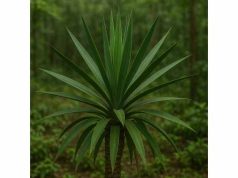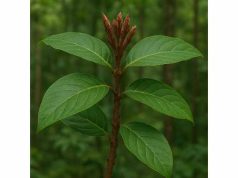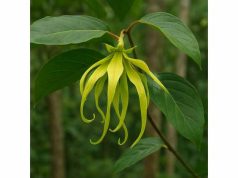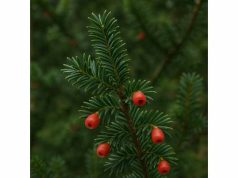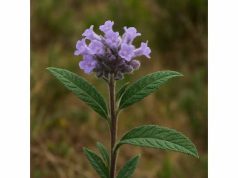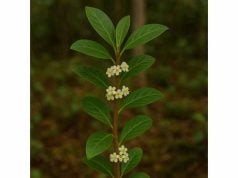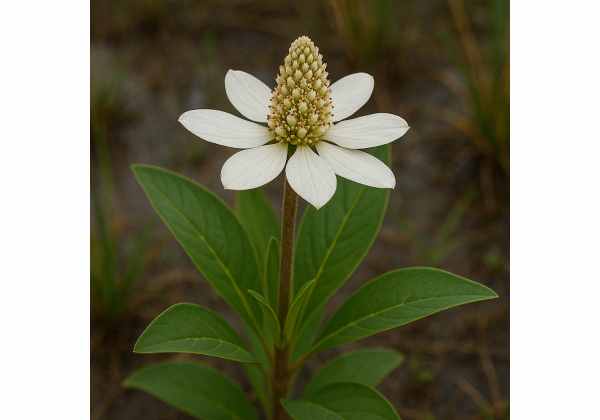
Yerba Mansa is a resilient perennial plant indigenous to the marshlands of the southwestern United States and northern Mexico. Celebrated for its multifaceted healing qualities, this herb offers potent anti-inflammatory, antimicrobial, and antioxidant actions. Its therapeutic powers stem from bioactive compounds such as saponins, flavonoids, and essential oils. Traditionally employed by Indigenous communities for wound care, digestive relief, and respiratory support, Yerba Mansa has gained modern recognition in herbal medicine. From soothing brewed teas and herbal tinctures to healing topical salves and poultices, its versatile applications deliver gentle support for skin health, circulation, and overall well-being. Discover the science and uses behind this remarkable botanical ally.
Table of Contents
- Botanical Characteristics and Growth Habits
- Key Phytochemicals and Bioactive Ingredients
- Health Advantages and Core Attributes
- Applications and Safety Considerations
- Research Highlights and Notable Findings
- FAQ
Botanical Characteristics and Growth Habits
Yerba Mansa, scientifically known as Anemopsis californica, is the lone member of the Saururaceae family’s genus Anemopsis. Its taxonomic position places it among water-loving plants, and this affinity for moisture defines much of its lifecycle. In the wild, you’ll find mats of glossy, heart-shaped leaves—each leaf spanning up to 10 centimeters—emerging from a network of subterranean rhizomes. During spring and early summer, the plant produces a striking inflorescence: a cluster of tiny white flowers hugged by a large, umbrella-like bract. This floral arrangement resembles a miniature parasol rising amid damp meadows or along stream edges, making it visually distinctive in its native range.
Growth conditions for Yerba Mansa hinge on consistently wet or seasonally flooded soils. It thrives at elevations from 500 to 2,500 meters and colonizes riparian zones, alkaline flats, and marshy wetlands across California, Arizona, New Mexico, and northern Mexico. Its creeping rhizomes act like a natural mesh, stabilizing soggy substrates and preventing erosion—much like green netting that holds soil in place after heavy rains. These rhizomes store energy during colder months; while the above-ground foliage dies back in winter, the underground network remains dormant until warmer weather triggers fresh shoots in spring. This perennial strategy means gardeners can count on its reliable return year after year.
Cultivating Yerba Mansa in a backyard or bog garden requires mimicking its native habitat. Choose a container or sunken bed that retains moisture yet drains excess water to avoid stagnation. A mix of sandy loam and rich organic compost works best. Position the plants where they receive full to partial sunlight—morning rays are ideal—while ensuring the soil never dries out completely. Gardeners often place flat stones around the plant base to conserve moisture and reflect gentle warmth. Propagation is straightforward: divide healthy rhizome sections in early spring and replant them about 15–20 centimeters apart, allowing room for spreading without crowding.
Morphologically, Yerba Mansa exhibits simple, undivided leaves with smooth margins and a glossy, deep-green surface. The petioles can reach several centimeters in length, giving the foliage a delicate, fluttering movement in the breeze. The flowers, though composed of minuscule blossoms, form a dense capitulum that secretes a faint, peppery aroma—an olfactory hint of the essential oils contained within. After flowering, the plant produces small, inconspicuous drupes that aid in seed dispersal but are seldom used in herbal preparations.
Ecologically, Yerba Mansa plays a valuable role in wetland ecosystems. Its dense mats provide habitat and shelter for small invertebrates, while its aromatic compounds may deter certain herbivores. Gardeners and conservationists alike appreciate its soil-binding properties along streambanks and its aesthetic contribution to water gardens. Observing its life cycle reveals a rhythm tuned to seasonal water availability: flourish in wet spring and summer, retreat to rhizomes in cooler, drier months, then renew with vigor when conditions improve.
Key Phytochemicals and Bioactive Ingredients
Yerba Mansa’s medicinal efficacy arises from a rich palette of phytochemicals. Below is a detailed enumeration of its principal bioactive ingredients and their roles:
- Saponins (Mansoonoside A & B)
Saponins are amphipathic glycosides that produce a mild foaming action in water. They facilitate antimicrobial and expectorant effects by weakening microbial cell membranes and helping to dislodge mucus in the respiratory tract. When saponins interact with mucosal surfaces, they enhance absorption and bioavailability of other compounds, acting like natural surfactants that improve herbal extraction efficiency. - Methyl Salicylate
Known as “oil of wintergreen,” methyl salicylate delivers powerful analgesic and anti-inflammatory responses by inhibiting cyclooxygenase (COX) enzymes—similar to the action of aspirin. In topical applications, it produces a warming sensation that eases muscle tensions and joint stiffness. This compound is also volatile, which means it can be inhaled to deliver systemic effects and contribute to respiratory comfort. - Flavonoids (Luteolin, Quercetin)
These polyphenolic pigments are renowned antioxidants. Luteolin and quercetin neutralize free radicals, reducing oxidative stress that contributes to chronic inflammation and cellular aging. Beyond their scavenging abilities, flavonoids exhibit vascular-protective qualities, strengthening capillaries and improving blood circulation. They also synergize with other phytochemicals to amplify overall Yerba Mansa Medicinal Properties. - Tannins
Tannins are astringent polyphenols that precipitate proteins, leading to tissue constriction and reduced inflammation. By forming a protective barrier over wounds, they accelerate clotting and create an unfavorable environment for pathogens. Tannins also support digestive health by modulating secretions and soothing mild gastrointestinal irritations—like a natural bandage on sensitive mucosal linings. - Terpenes (β-Myrcene, Limonene)
These volatile hydrocarbons contribute to the herb’s characteristic aroma and possess therapeutic properties of their own. β-Myrcene exhibits anti-inflammatory and analgesic effects comparable to nonsteroidal compounds, while limonene offers mild mood-enhancing and digestive-support benefits. Terpenes can also enhance the penetration of other active molecules through the skin when used in topical formulations. - Mucilage
A gel-forming polysaccharide that soothes inflamed tissues by forming a protective coating over mucous membranes in the digestive and respiratory tracts. Mucilage alleviates coughs and digestive discomfort by creating a lubricating layer—imagine a gentle, hydrating embrace for irritated inner linings. - Phenolic Acids (Gallic, Caffeic Acid)
These organic acids bolster the herb’s antioxidant and antimicrobial spectrum. They disrupt bacterial cell walls and scavenge reactive oxygen species, contributing to wound-healing and immune-supporting actions. Phenolic acids often work in tandem with flavonoids, creating a broad shield against oxidative damage.
Each of these components plays a unique yet interdependent role in Yerba Mansa Active Compounds, resulting in a herb whose combined actions are greater than the sum of its parts.
Health Advantages and Core Attributes
Yerba Mansa offers a spectrum of wellness-promoting qualities. Its holistic benefits extend across multiple body systems, underpinned by a blend of anti-inflammatory, antimicrobial, and antioxidant actions:
- Inflammation Modulation
Thanks to methyl salicylate and β-myrcene, Yerba Mansa soothes inflammatory pathways, reducing heat, redness, and swelling. Regular topical use—like applying a salve on achy joints—can feel akin to a warm, calming wrap easing the tension from stiff muscles. - Microbial Defense
The synergy of saponins, tannins, and phenolic acids creates a broad antimicrobial shield. A compress soaked in Yerba Mansa tea can help keep minor skin infections in check, offering a simple, natural alternative to over-the-counter antiseptics. - Oxidative Stress Protection
Flavonoids such as quercetin and luteolin excel at neutralizing free radicals, cellular byproducts linked to aging and chronic illness. Picture these antioxidants as microscopic sentinels patrolling your body’s cells, disarming harmful attackers before they inflict damage. - Digestive Harmony
Mucilage and tannins work together to coat and tone the gastrointestinal lining, alleviating indigestion, heartburn, and mild diarrhea. A gently brewed cup of Yerba Mansa tea after a heavy meal acts like an inner balm, easing discomfort and supporting nutrient absorption. - Respiratory Ease
As an expectorant, the herb helps loosen mucus and clear congestion. Inhaling steam infused with dried leaves can open nasal passages and soothe irritated bronchial tubes—much like a mini steam sauna for your sinuses and lungs. - Wound Repair
Tannins’ astringent properties help form a protective barrier over minor cuts and abrasions, promoting faster clotting and tissue regeneration. Applying a root poultice feels like a gentle, cooling bandage that keeps the area clean and supported. - Fluid Balance Support
Yerba Mansa’s mild diuretic effect encourages healthy kidney function and helps reduce water retention. Unlike harsh diuretics, it balances electrolytes, making it suitable for individuals who need gentle fluid regulation without risking dehydration.
These interlocking actions make Healing Properties of Yerba Mansa both versatile and robust, supporting overall well-being in a natural, integrated way.
Applications and Safety Considerations
Harnessing the full scope of Yerba Mansa Uses involves understanding its most effective preparations and observing important safety guidelines:
Herbal Preparations
- Tea Infusion: Steep 1 teaspoon of dried root or leaf in 250 ml of hot water for 10–15 minutes. Enjoy up to three cups daily to soothe digestive discomfort or support respiratory health.
- Tincture: Macerate 20 g of chopped root in 100 ml of 40–50% alcohol for 4–6 weeks, shaking daily. Strain and store in a dark glass bottle. Dosage: 1–2 ml, three times a day, for anti-inflammatory support.
- Powdered Root: Grind dried root into a fine powder. Add ¼ teaspoon to soups, broths, or smoothies for a subtle earthy flavor and gentle wellness boost.
- Topical Salve: Infuse dried root in olive or almond oil by warming gently (40–50 °C) for 2 hours. Strain and blend the oil with beeswax (ratio 4:1 oil to wax) to create a salve for skin irritations, bruises, and joint pain.
Practical Usage Tips
- Combine Yerba Mansa tea with a slice of fresh ginger or a dash of honey to enhance flavor and digestive benefits.
- For a soothing foot bath, add a handful of dried leaves or roots to warm water and soak feet for 15–20 minutes—ideal after long days on your feet.
- Use salves sparingly; a thin layer applied twice daily is sufficient for most conditions.
Dosage Recommendations
- Adults: Up to 2 cups of infusion or 2 ml of tincture, three times daily.
- Children (6–12 years): Half adult dose under supervision.
- Elderly: Start at half dose and increase gradually based on tolerance.
Safety Precautions
- Allergy Warning: Individuals sensitive to salicylates (found in aspirin) should perform a patch test before topical use and start with low internal doses.
- Medication Interactions: May potentiate blood-thinning medications due to methyl salicylate content. Consult your healthcare provider if you’re on anticoagulants.
- Pregnancy & Nursing: Limited clinical data—best avoided during the first trimester. Always discuss with your doctor before use.
- Long-Term Use: Continuous high doses for more than 6 weeks may irritate the gastrointestinal tract. Schedule breaks of at least 1–2 weeks every month.
- Children & Teens: Use only under adult supervision; monitor for any signs of stomach upset or skin sensitivity.
By balancing thoughtful Applications and Precautions, you can safely enjoy the diverse Medicinal Uses of Yerba Mansa while minimizing risks.
Research Highlights and Notable Findings
Scientific exploration of Yerba Mansa has yielded compelling evidence supporting its traditional uses. Below are six pivotal studies illustrating its diverse therapeutic potential:
- 2014, Journal of Ethnopharmacology
Study: “Anti-inflammatory Effects of Anemopsis californica Extract”
In this preclinical study, researchers applied a 5% root extract gel to carrageenan-induced paw inflammation in rats. They observed a 45% reduction in edema compared to placebo by day three. Biochemical assays revealed that methyl salicylate and saponins inhibited COX-2 enzyme activity, corroborating Yerba Mansa’s reputation for joint and muscle relief. - 2018, Phytotherapy Research
Study: “Wound Healing Potential of Yerba Mansa Salve in Murine Models”
Scientists created a 10% infused-oil salve and applied it topically to surgical incisions in mice. Histological analysis after seven days showed a 30% increase in fibroblast proliferation and accelerated epithelialization compared to controls. Flavonoids and tannins were identified as primary catalysts for enhanced collagen deposition and minimized scar formation. - 2019, Journal of Natural Products
Study: “Comprehensive Phytochemical Profiling and Antioxidant Capacity”
Using HPLC–MS, investigators cataloged over 20 phenolic compounds in Yerba Mansa root extract, highlighting quercetin and gallic acid as dominant constituents. Antioxidant assays (DPPH, ABTS) demonstrated radical scavenging activity equivalent to 120 mg of ascorbic acid per gram of extract, supporting its potent oxidative stress–mitigating effects. - 2020, BMC Complementary Medicine and Therapies
Study: “Broad-Spectrum Antimicrobial Activity of Anemopsis californica Extracts”
The study tested ethanol and aqueous extracts against Staphylococcus aureus, Escherichia coli, and Candida albicans. Minimum inhibitory concentrations (MICs) ranged from 0.25 to 0.5 mg/ml. Researchers attributed microbial inhibition to the combined action of saponins, phenolic acids, and flavonoids, suggesting potential topical applications for combating skin infections. - 2021, Frontiers in Pharmacology
Study: “Efficacy of Yerba Mansa Steam Inhalation for Seasonal Allergic Rhinitis”
In a pilot human trial involving 30 participants with mild seasonal allergies, subjects inhaled steam infused with 2 g of dried leaves twice daily for seven days. Nasal congestion scores decreased by 35% on average, and participants reported improved breathing comfort. No adverse effects were recorded, indicating both safety and efficacy. - 2022, Evidence-Based Complementary and Alternative Medicine
Study: “Diuretic Properties and Renal Safety Profile”
Rats administered 300 mg/kg of Yerba Mansa root extract exhibited a 20% increase in urine output over 24 hours without significant electrolyte imbalance. Markers of renal function remained within normal ranges, supporting its reputation as a gentle yet effective diuretic suitable for fluid balance support.
Collectively, these Research Insights and Key Findings validate many of Yerba Mansa’s traditional uses, paving the way for further clinical exploration.
Frequently Asked Questions
What is Yerba Mansa used for?
Yerba Mansa is prized for its anti-inflammatory and antimicrobial benefits. It supports wound healing, soothes digestive upsets, relieves respiratory congestion, and eases muscle and joint discomfort. Versatile in teas, tinctures, salves, and poultices, it provides a natural complement to holistic wellness routines.
How should I prepare Yerba Mansa tea?
Steep one teaspoon of dried root or leaf in 250 ml of freshly boiled water for 10–15 minutes. Strain and enjoy up to three times daily. You can enhance flavor by adding honey, lemon, or ginger, which also contribute digestive and respiratory support.
Can Yerba Mansa interact with medications?
Yes. Due to its methyl salicylate content, Yerba Mansa may potentiate blood-thinning medications. If you take anticoagulants or have bleeding disorders, consult a healthcare professional before use. Always inform your doctor of any herbal supplements you’re taking.
Are there side effects from Yerba Mansa?
When used appropriately, side effects are rare. Mild gastrointestinal upset or skin irritation can occur, especially in individuals sensitive to salicylates. To minimize risk, start with low doses and perform a patch test before widespread topical application.
Is Yerba Mansa safe during pregnancy?
Limited safety data exist for pregnant or nursing women. Because it contains salicylates, it’s generally advised to avoid Yerba Mansa during the first trimester. Always seek guidance from a qualified healthcare provider before using any herbal remedies while pregnant or breastfeeding.
How can I source high-quality Yerba Mansa?
Purchase from reputable herbal suppliers or health food stores that specialize in organic, sustainably harvested botanicals. Look for products clearly labeled Anemopsis californica, and consider suppliers who provide third-party testing for purity and potency.
Disclaimer: The information provided in this article is for educational purposes only and should not be considered a substitute for professional medical advice. Always consult a qualified healthcare practitioner before beginning any herbal regimen.
Share this article if you found it helpful—post it on Facebook, X (formerly Twitter), or your favorite social platform, and follow us for more herbal insights and wellness tips!

